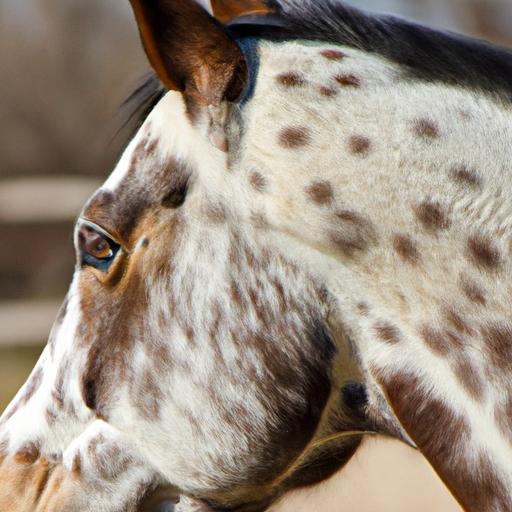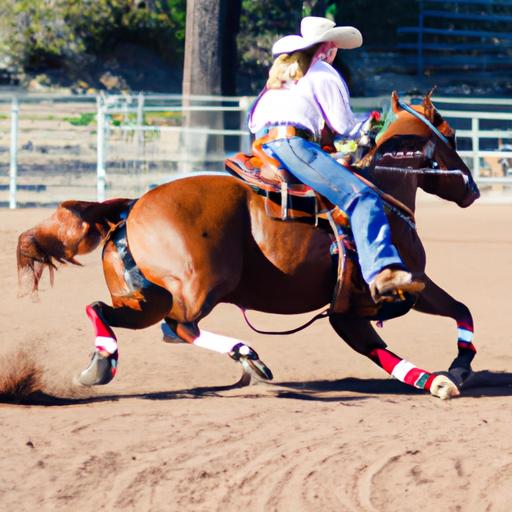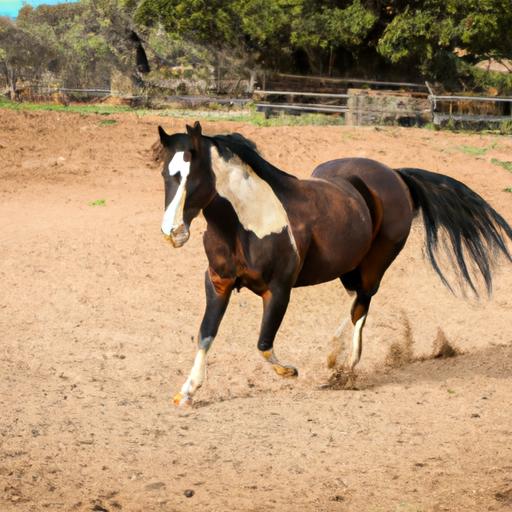Unlock the wonders of western horse breeds! Explore their rich history, unique characteristics, and versatility in the equestrian world. A must-read for horse enthusiasts and riders.
As we delve into the enchanting world of horses, it’s impossible not to be captivated by the diversity of breeds. Among these magnificent creatures, Western horse breeds stand out with their unique qualities and rich history. Whether you’re an avid equestrian or simply have a love for horses, understanding the distinct characteristics of Western horse breeds is essential.
Western horse breeds have gained immense popularity in the equestrian community for their versatility and adaptability. From ranch work to rodeo events, these breeds excel in a variety of disciplines, making them highly sought-after companions for riders of all levels. But what exactly sets them apart from other breeds? Let’s embark on a journey to explore the captivating world of Western horse breeds.
Imagine a horse that embodies strength, agility, and a gentle disposition – that’s the essence of Western horse breeds. These breeds possess physical attributes perfectly suited for a range of Western riding styles, such as barrel racing, reining, and cutting. Their muscular build, sturdy legs, and compact frame enable them to perform intricate maneuvers with grace and precision.
But there’s more to Western horse breeds than just their physical traits. Their temperament is equally remarkable. These horses exhibit a calm and docile nature, making them ideal for riders seeking a reliable and trustworthy companion. With their steady demeanor, Western horse breeds foster a deep bond with their riders, creating a true partnership that transcends the boundaries of horsemanship.
Understanding the different Western horse breeds is not only fascinating but also crucial for horse enthusiasts and riders. Each breed has its own strengths, weaknesses, and specialized skill sets. By familiarizing ourselves with these breeds, we can make informed decisions when it comes to choosing the perfect horse for our specific needs and goals.
In the upcoming sections, we will delve into the history and origins of Western horse breeds, explore the most popular breeds in detail, discuss training and riding techniques, and reflect on the enduring value of these majestic creatures. So, saddle up and join me on this captivating journey through the world of Western horse breeds. Let’s unlock the secrets and unravel the wonders of these remarkable companions.
Stay tuned for Section II, where we will delve into the fascinating history and origins of Western horse breeds.
Characteristics of Western Horse Breeds

When it comes to Western horse breeds, there are certain characteristics that set them apart from other equine counterparts. Let’s delve into the fascinating world of these breeds and explore their distinctive traits, physical attributes, temperament, and remarkable abilities.
Physical Attributes
Western horse breeds possess a distinct physicality that makes them well-suited for the demands of Western riding disciplines. With well-muscled bodies, strong legs, and sturdy frames, these breeds exhibit the ideal combination of strength and agility. Their compact build allows for quick turns, sudden stops, and swift maneuvers, making them natural athletes in the Western riding arena.
Temperament and Disposition
One of the standout qualities of Western horse breeds is their calm and gentle temperament. These horses possess a natural inclination towards a cooperative and easygoing nature, which contributes to their reliability and suitability for riders of all skill levels. Whether you’re a seasoned equestrian or a beginner, Western horse breeds provide a steady and trustworthy companion, fostering a harmonious partnership built on mutual trust and respect.
Remarkable Abilities
Western horse breeds showcase a range of exceptional abilities that make them highly versatile and sought after. From their innate cow sense, which aids in ranch work and cattle herding, to their speed and agility in barrel racing and cutting, these breeds excel in various Western disciplines. Their natural athleticism and willingness to perform make them valuable assets in rodeo events, where precision and speed are paramount.
Popular Western Horse Breeds
Within the realm of Western horse breeds, several breeds have gained widespread recognition and acclaim. The Quarter Horse, renowned for its versatility, dominates the Western riding scene with its exceptional speed, agility, and cow sense. Paint Horses, known for their eye-catching coat patterns, excel in both Western and English disciplines, making them a popular choice among riders. The Appaloosa, with its distinctive spotted coat and strong build, is highly regarded for its versatility and endurance, making it a favored breed for trail riding and ranch work.
As we continue our exploration of Western horse breeds, we will dive deeper into their captivating history and origins. Stay tuned for Section III, where we will unravel the fascinating stories behind the development of these remarkable breeds.
History and Origins of Western Horse Breeds

Development of Western Horse Breeds
To truly appreciate the magnificence of Western horse breeds, we must delve into their rich history and origins. These breeds have evolved over centuries, shaped by the needs and aspirations of those who relied on them.
Historical Background
The development of Western horse breeds can be traced back to the expansion of the American frontier. As settlers migrated westward, they encountered diverse challenges that demanded versatile and hardy horses. The breeding programs that emerged during this period aimed to create a horse perfectly suited for the demands of ranch work, herding, and transportation across vast territories.
Creation and Original Purposes
The Western horse breeds we admire today were meticulously crafted by breeders who aimed to enhance specific traits. These breeders selectively crossed various horse breeds to create offspring that embodied the desired characteristics. The result was a range of breeds with exceptional athleticism, intelligence, and adaptability.
Quarter Horses: The All-Around Athletes
One of the most iconic Western horse breeds is the Quarter Horse. Originating in the United States, this breed was developed for its impressive speed over short distances, making it ideal for quarter-mile races. However, Quarter Horses quickly proved their versatility, excelling in ranch work, rodeo events, and even as reliable trail companions.
Paint Horses: The Colorful Companions
Another remarkable Western horse breed is the Paint Horse. Known for its striking coat patterns, this breed boasts a rich heritage rooted in Native American culture. Originally used as war horses by Native tribes, Paint Horses later became prized for their strength and calm temperament. Today, they are highly sought after for their beauty, versatility, and prowess in Western riding disciplines.
Appaloosas: The Spotted Steeds
Appaloosas, with their distinctive coat patterns and captivating eyes, hold a special place in the hearts of horse enthusiasts. Originating from the Palouse region of the United States, these horses were historically valued for their endurance and surefootedness. Appaloosas have a long-standing association with Native American tribes, who revered them for their loyalty and adaptability.
Influence of Spanish Horses
It is impossible to discuss the history of Western horse breeds without acknowledging the profound influence of Spanish horses. When Spanish explorers first arrived in the Americas, they brought with them their sturdy, agile, and resilient horses. Through interbreeding with native horses, Spanish bloodlines became an integral part of the foundation for many Western horse breeds, contributing to their distinctive traits and characteristics.
In Section IV, we will delve deeper into the most popular Western horse breeds, exploring their unique qualities and the achievements of notable horses within each breed. So, let’s continue our journey through the captivating world of Western horse breeds.
Popular Western Horse Breeds
When it comes to Western horse breeds, there are several that have garnered immense recognition and admiration within the equestrian world. Let’s dive into the characteristics, strengths, and areas of expertise of these remarkable breeds, along with notable horses and their achievements in various Western riding disciplines.
1. Quarter Horses
The Quarter Horse, known for its incredible speed and versatility, is perhaps the most popular Western horse breed. With a muscular build and a compact frame, these horses excel in sprinting short distances, making them ideal for activities such as barrel racing and cutting. They possess a calm and intelligent temperament, making them a favorite among riders of all levels. Notable Quarter Horses include “Dash Ta Fame,” a legendary barrel racing champion, and “Smart Chic Olena,” a renowned reining horse.
2. Paint Horses
Paint Horses, characterized by their striking coat patterns, are another beloved Western breed. These horses are known for their athleticism and versatility. Their strong, sturdy build enables them to excel in various Western disciplines, including reining, cutting, and pleasure riding. With their gentle nature and willingness to please, Paint Horses make excellent companions. Notable Paint Horses include “Docs Keepin Time,” a famous movie horse, and “Tinker With Guns,” a highly successful reining horse.
3. Appaloosas
The Appaloosa breed, famous for its distinctive coat patterns and spotted markings, holds a special place in the hearts of horse enthusiasts. These horses are renowned for their endurance and agility, making them ideal for long-distance trail rides, as well as Western pleasure and reining competitions. Appaloosas are known for their intelligence and versatility, making them highly adaptable in various riding disciplines. Notable Appaloosas include “Zippos Sensation,” a renowned Western pleasure champion, and “Bright Eyes Brother,” a legendary cutting horse.
By exploring the unique characteristics and achievements of these popular Western horse breeds, we gain a deeper appreciation for their contributions to the equestrian world. Whether you’re drawn to the lightning speed of the Quarter Horse, the striking beauty of the Paint Horse, or the captivating patterns of the Appaloosa, each breed offers something truly remarkable. So, let’s continue our journey and uncover the training and riding techniques that enhance the bond between these extraordinary horses and their riders.
Stay tuned for Section V, where we will delve into the art of training and riding Western horse breeds, unlocking the secrets to a harmonious partnership.
Training and Riding Western Horse Breeds
Tips for Training and Handling Western Horse Breeds
When it comes to training and handling Western horse breeds, there are a few key tips and techniques that can help you establish a strong bond and achieve remarkable results.
1. Patience and Consistency
Training any horse requires patience, but it is especially important when working with Western horse breeds. These horses thrive on routine and consistency, so it’s vital to establish clear expectations and stick to them. By providing consistent cues and rewards, you can build trust and confidence in your horse.
2. Positive Reinforcement
Western horse breeds respond exceptionally well to positive reinforcement techniques. Rewarding desired behaviors with treats, praise, or a gentle pat on the neck reinforces their understanding of what you’re asking of them. This positive approach helps create a harmonious partnership based on trust and mutual respect.
3. Proper Groundwork
Before even mounting your horse, it’s essential to lay a solid foundation through groundwork exercises. This includes teaching your horse to yield to pressure, move their hindquarters and forequarters, and stand calmly for grooming and tacking up. Groundwork establishes respect, communication, and control, setting the stage for a successful riding experience.
Skills Required for Riding Western
Riding Western requires specific skills that are tailored to the style and maneuvers associated with this discipline. Here are a few skills you should develop to fully enjoy the experience of riding Western horse breeds:
1. Balance and Seat
Maintaining a solid balance and seat is crucial in Western riding. The rider’s weight should be centered and distributed evenly, ensuring stability and harmony with the horse’s movements. Developing a strong core and flexible hips will contribute to a more effective and comfortable ride.
2. Rein Management
Western riding often involves the use of a single rein, held in one hand, allowing for precise and subtle communication with the horse. Mastering rein management techniques, such as neck reining, direct reining, and split reins, will enable you to guide your horse effortlessly.
3. Maneuvers and Techniques
Western riding encompasses a variety of maneuvers, including sliding stops, spins, and pivots. Learning these techniques requires practice and coordination between horse and rider. By understanding the cues and aids necessary for each maneuver, you can perform them with finesse and elegance.
Compatibility with Riding Disciplines and Activities
Western horse breeds have a remarkable versatility that extends beyond Western riding disciplines. These breeds can excel in various activities such as trail riding, pleasure riding, ranch work, and even competitive events like team penning and mounted shooting. Their calm demeanor, athleticism, and adaptability make them suitable companions for riders of all levels and interests.
Whether you’re a seasoned Western rider or exploring different disciplines, Western horse breeds offer a world of possibilities. Their willingness to learn, gentle nature, and exceptional athleticism make them ideal partners for a wide range of riding endeavors.
In the next section, we will conclude our exploration of Western horse breeds and reflect on the enduring value they bring to the equestrian world.


